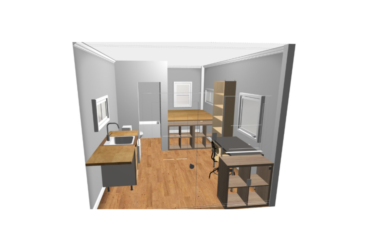Always Carry A Bouquet is an interactive fiction game devoted to exploring alternatives to calling the police. Players are presented with a series of Washington, DC-based scenarios that they must resolve without calling the police. Along the way, they collect a bouquet representing the collection of skills and resources they used to resolve each situation.
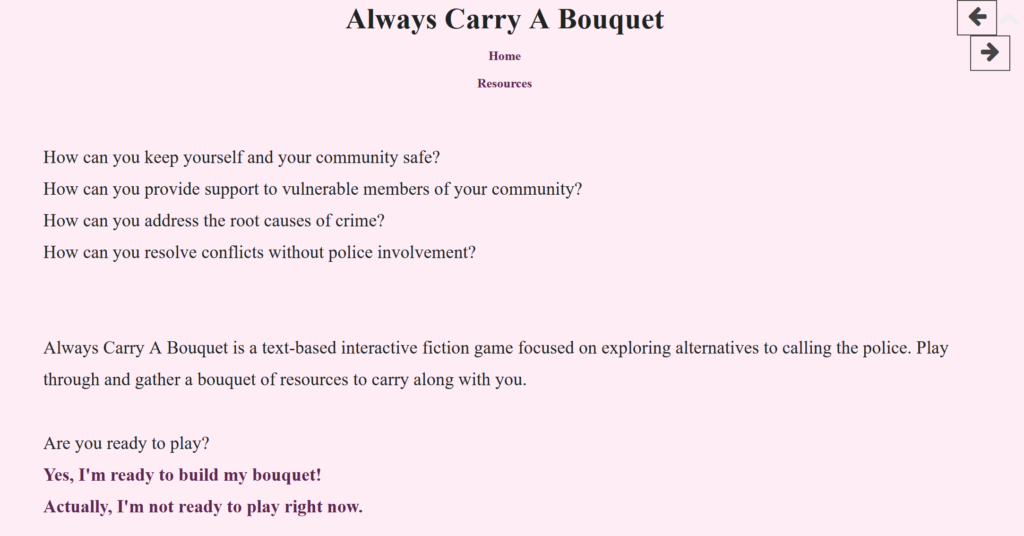
The introduction screen welcomes players to the game and begins by fading in a series of questions for players to consider: How can you keep yourself and your community safe? How can you provide support to vulnerable members of your community? How can you address the root causes of crime? How can you resolve conflicts without police involvement?
Mechanics
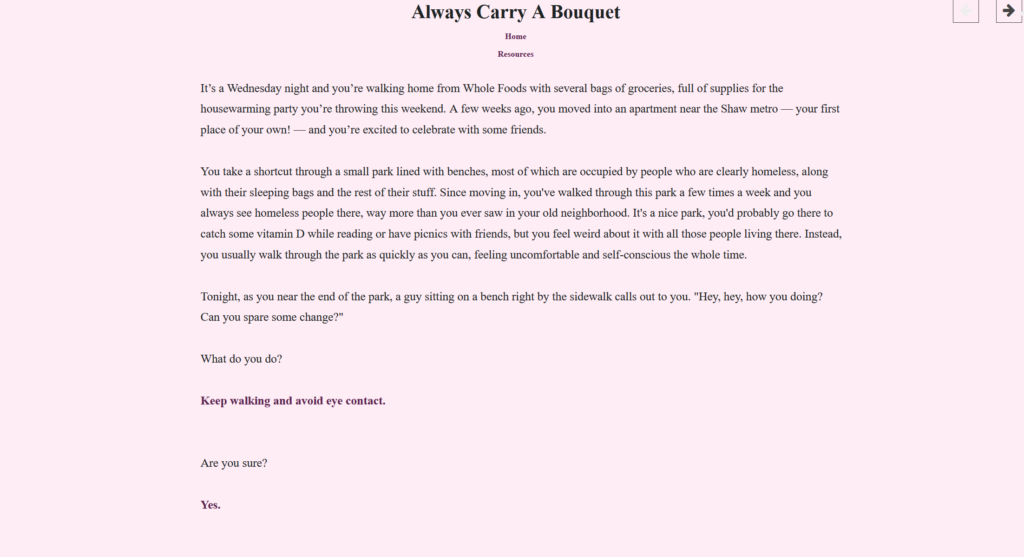
In each scenario, players can click to cycle through the possible responses — including calling the police — and consider their options before confirming how they want to proceed. Once players click “Yes”, they are taken to the next page.
Calling the Police

Players are presented with the option to call the police as one of several possible responses to each scenario.

If players select this option, they are then taken to a screen that challenges that choice and requires them to select one of the other options if they want to proceed with the game.
Rewards
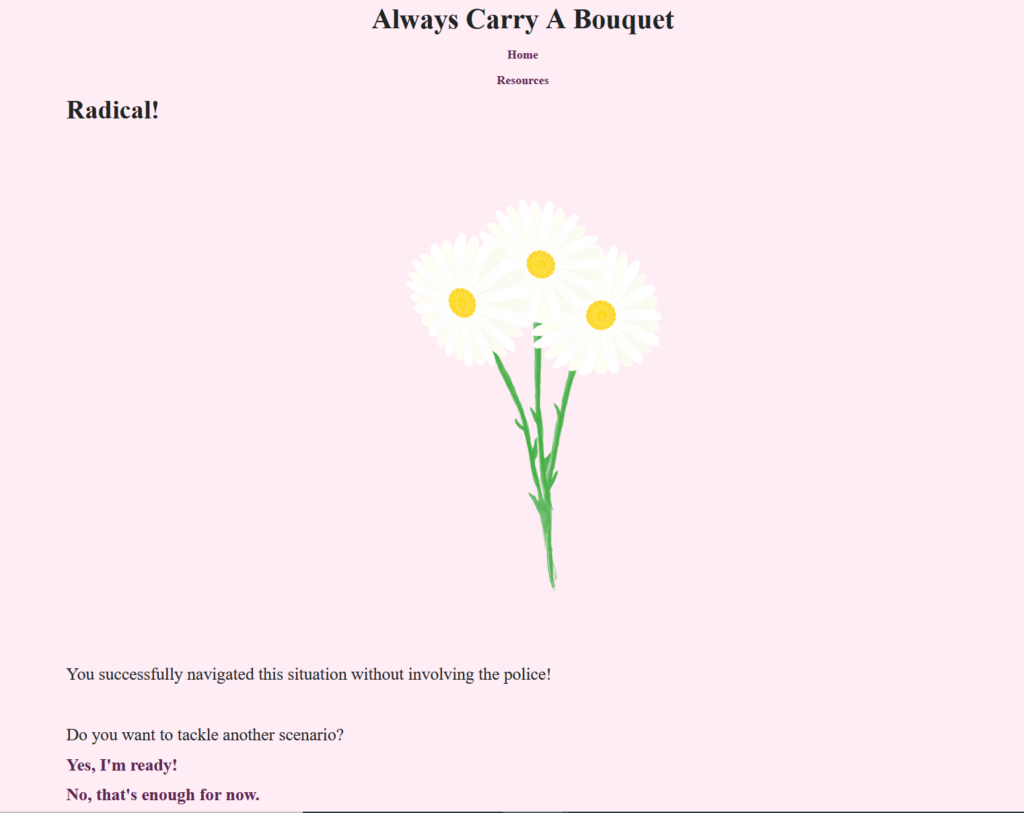
As players successfully navigate each scenario, they collect a new flower for their bouquet. After resolving each scenario, players are given the option to proceed with the next scenario or stop playing. Players who select “No, that’s enough for now” are taken to a resources page where they can further explore alternatives to calling the police.
Resources
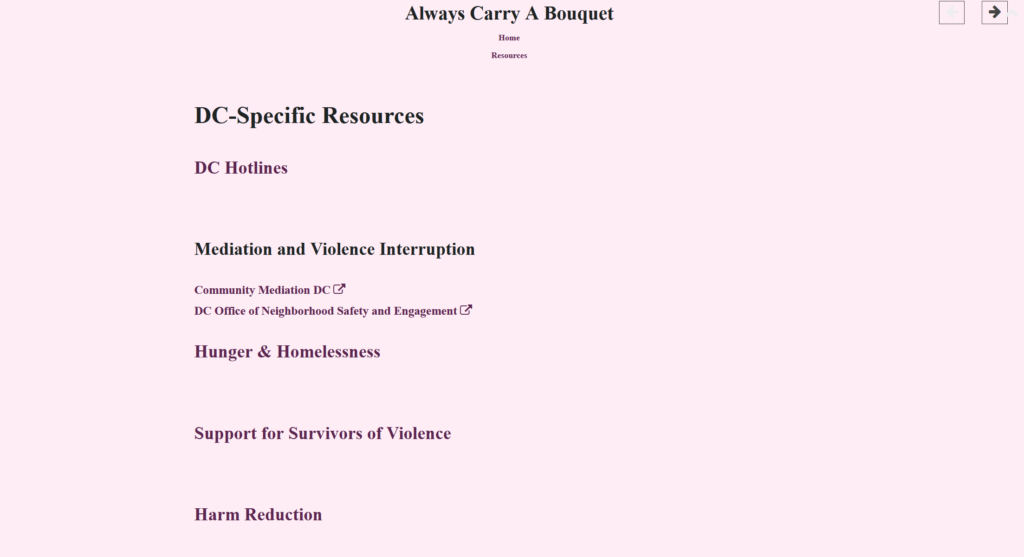
The resources listed are primarily DC-specific resources, including a variety of hotlines, mediation and violence interruption resources, hunger and homelessness resources, support for survivors of violence, and harm reduction resources.
Design and User Interface
My goal was to have the game be as immersive as possible while still allowing players to easily navigate back and forth between passages and reach the resources page from any point in the game. To facilitate this, I shifted the UI/navigation sidebar to the top of the screen, added links to the home page and resource page, and made the UI bar fully collapsible so that players can hide it if they wish. I also felt that the standard appearance of a Twine game, with white text on a black background, was too harsh to match the atmosphere I wanted for Always Carry A Bouquet, so I customized the display to create a softer, more warm-and-fuzzy appearance in a color scheme that complemented the flowers I drew for the game.
Sources and Inspiration
Depression Quest was a significant inspiration for Always Carry A Bouquet and helped to convince me that Twine could be a suitable platform for building my game. James Paul Gee’s What Video Games Have to Teach Us About Learning and Literacy offered a useful framework for understanding how games make space for players to learn that shaped several of my design decisions in Always Carry A Bouquet. In particular, his discussions of the value of games as a space where players can be challenged and take risks without worrying about real-world consequences, his emphasis on the layered identities players balance and reflect on as they play games, and his discussion of the importance of practice, achievement, exploration, and multiple routes to success all influenced my game design. In developing scenarios for the game, I aimed to provide enough details and context to set the scene without providing much information about the main character, to leave space for players to place themselves in the story and imagine themselves as someone who resolved each of these situations without police involvement. Throughout the game, players practice not calling the police, but there are multiple ways to resolve each situation and players are free to choose the option that they are most comfortable with. Players can also flip back and forth between different options, exploring and discovering the limits of what they can do within the game world and the resources available to them.
Plans for Future Iterations
In its current form, Always Carry A Bouquet is a very short game, with only two scenarios for the player to explore. I intend to expand the game to include more scenarios for players to navigate, and the additional scenarios I have sketched out so far involve addressing loitering, theft, mental health crises, domestic violence, and sexual assault. My goal is to have the players address increasingly complex and difficult situations as they continue through the game, so the two scenarios included in this version are designed to be the easiest to tackle. Given the nature of the two scenes included here, I decided not to include a trigger warning on the introductory page of the game at this time, but I will add one once I add these other scenarios.
In a future iteration of Always Carry A Bouquet, I would also like to add a mechanism for tracking player choices throughout the game so that the final passage will automatically generate a list of the specific resources the player chose to turn to as they navigated various scenarios. The coding for this was too complicated for me to figure out before submitting this, but with some more time I should be able to create a personalized ending screen that a player can print to a PDF and save, either as a cheat sheet for resources to help them in similar real-life situations, or to share with others as part of broader discussions about building safe communities without police.



